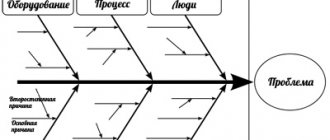The essence and types of innovative educational technologies
Definition 1
Innovative educational technology is a methodology for organizing educational activities that involves the use of some new or qualitative improvement of existing techniques and means to increase the efficiency of the educational process and the creation of conditions for educational activities that best meet the current trends in the socio-economic development of society.
Innovative activities in education involve complex activities aimed at the emergence of innovations in the educational sphere. These innovations may be methods and techniques for organizing the educational process, resources used in the process of education and training, scientific theories and concepts.
Innovation develops through the use of research activities aimed at obtaining new scientific knowledge, some kind of discovery, or invention. In addition, the emergence of innovations can be the result of design work, during which instrumental and technological knowledge is developed, reflecting the possibilities of implementing practical actions based on existing scientific theories and concepts. In this way, innovative projects are created, which subsequently lead to the emergence of new technologies.
Finished works on a similar topic
- Course work Innovative educational technologies 460 rub.
- Abstract Innovative educational technologies 220 rub.
- Test work Innovative educational technologies 220 rub.
Receive completed work or specialist advice on your educational project Find out the cost
Innovations also develop in the process of educational activities. During the learning process, students develop theoretical and practical knowledge, which can then be applied in various areas of practical life related to the creation of innovations.
Innovative educational technologies are based on three main components:
- Modern, well-structured content, the foundation of which is made up of competencies in professional activities that meet the current realities of entrepreneurial activity. the content includes a variety of multimedia materials transmitted through modern means of communication.
- Application of modern, innovative methods in teaching. Such methods should be focused on developing future professional competencies, attracting students to active learning and practical activities, and showing initiative in the learning process. Passive assimilation of educational programs is excluded.
- Availability of modern infrastructure in the educational process. It should be based on information, technological, organizational and communication components that help to apply new forms and methods of learning, in particular distance learning.
Too lazy to read?
Ask a question to the experts and get an answer within 15 minutes!
Ask a Question
Innovative technologies in education are used based on the application of certain approaches to teaching, i.e. principles that include requirements and targets that are the foundation for the development of new technologies.
All innovations in the pedagogical field are based on their strict compliance with the current stage of socio-economic development of society. Currently, they should be focused on developing students’ independence, developing their abilities for self-learning and self-development, and conscious, rather than mechanical, assimilation of curricula.
Innovative technologies in the educational field are constantly developing and their range is expanding. The following main groups of technologies can be distinguished:
- Information and communication technologies or ICT in the field of subject teaching. The use of these technologies is associated with the development of the information society and the active introduction of information tools into all spheres of life. Such technologies are aimed at informatizing the consciousness of students. Educational programs include new subjects that focus on the study of computer science, information processes and ICT. The teaching process is also being actively computerized to help improve the information culture of teaching staff and students;
- Personality-oriented technologies. These technologies are aimed at placing the individual at a priority position in training and education. The entire educational process is focused specifically on the development of the individual, taking into account his individuality and developmental characteristics.
- Information and analytical supply of the educational process. The use of this group of technologies is focused on studying the development of each student, class, parallel, educational institution, and their adequate assessment;
- Monitoring of intellectual development. Technologies are based on the use of charts, testing systems, and new assessment methods that make it possible to track the dynamics of the development of individual students and the quality of education in general;
- Educational technologies. The learning process cannot be separated from education. Therefore, new methods are being introduced to develop the personality and its basic qualities;
- Didactic technologies. They are the main factor in the development of an educational institution. Such technologies are based on a set of techniques and means, including the use of traditional and innovative technologies: independent work with educational literature, the use of audiovisual and multimedia tools, differentiated teaching methods.
Figure 1. Innovative educational technologies. Author24 - online exchange of student work
New pedagogical technologies in the education system
Modern pedagogy offers such innovative pedagogical technologies.
Project work
Project work is a type of activity that helps develop students’ creative abilities and develop their teamwork skills. The purpose of the projects is to update and use in practice, expand and deepen the acquired knowledge. Work on a project can take place individually, in pairs or in microgroups; it involves solving a problem and searching for optimal solutions.
Schools actively use the integration of disciplines in projects, for example, they invite students to explore interdisciplinary connections between language and literature, mathematics and chemistry, history and biology.
This innovation forms and develops complex thinking, the ability to analyze, establish connections and create new ideas, and see a holistic picture of the world.
Gaming technology
Game rooms perform several functions: entertaining, therapeutic, diagnostic, social. During the game, students engage in free developmental activities, receiving pleasure and effect not only from the result, but also from the process.
In the educational process, the game is used as an element of a broader technology, part of a lesson or extracurricular activity. A pedagogical game has a clearly formulated goal, which is presented in the form of a game task; all participants in the game are subject to pre-prepared and voiced rules.
Distance learning
Distance learning is an innovation that is being actively implemented in European countries and the USA. Courses are created on specially designed platforms, which include lecture series, assignments, and a schedule of face-to-face consultations with teaching. Students organize their time independently and discipline themselves for self-study.
There are several platforms where schools and universities offer various courses in the public domain (“Universarium”, “Lectorium”, and from foreign countries – “Coursera”). Schools and universities are developing their own information resources that help students and teachers interact and exchange experiences outside the walls of educational institutions.
Interactive technologies
Interactive technologies are methods that help teachers and students change places. By interacting in groups and working on information, students discover new opportunities for self-learning. This is a whole complex of methods and techniques of work aimed at creating activities during which students interact with each other and work to solve a common problem.
Interactive technologies are implemented through the holding of seminars, debates, problem lectures, discussions in schools, where students can present their thoughts and learn to argue their opinions.
Portfolio
The portfolio helps to assess the dynamics of learning outcomes. With its help you can visualize educational achievements and discoveries. This innovation is implemented through the following methods of accumulating information: electronic portfolios, “folders of achievements,” “growth diaries.” They record all developments and projects, collect materials that confirm participation in projects, discussions, and the results of creative activity.
The listed technologies are used comprehensively, taking into account the main approaches. When choosing a technology, method and method of work, teachers take into account the personal characteristics of students, their inclinations and needs.



